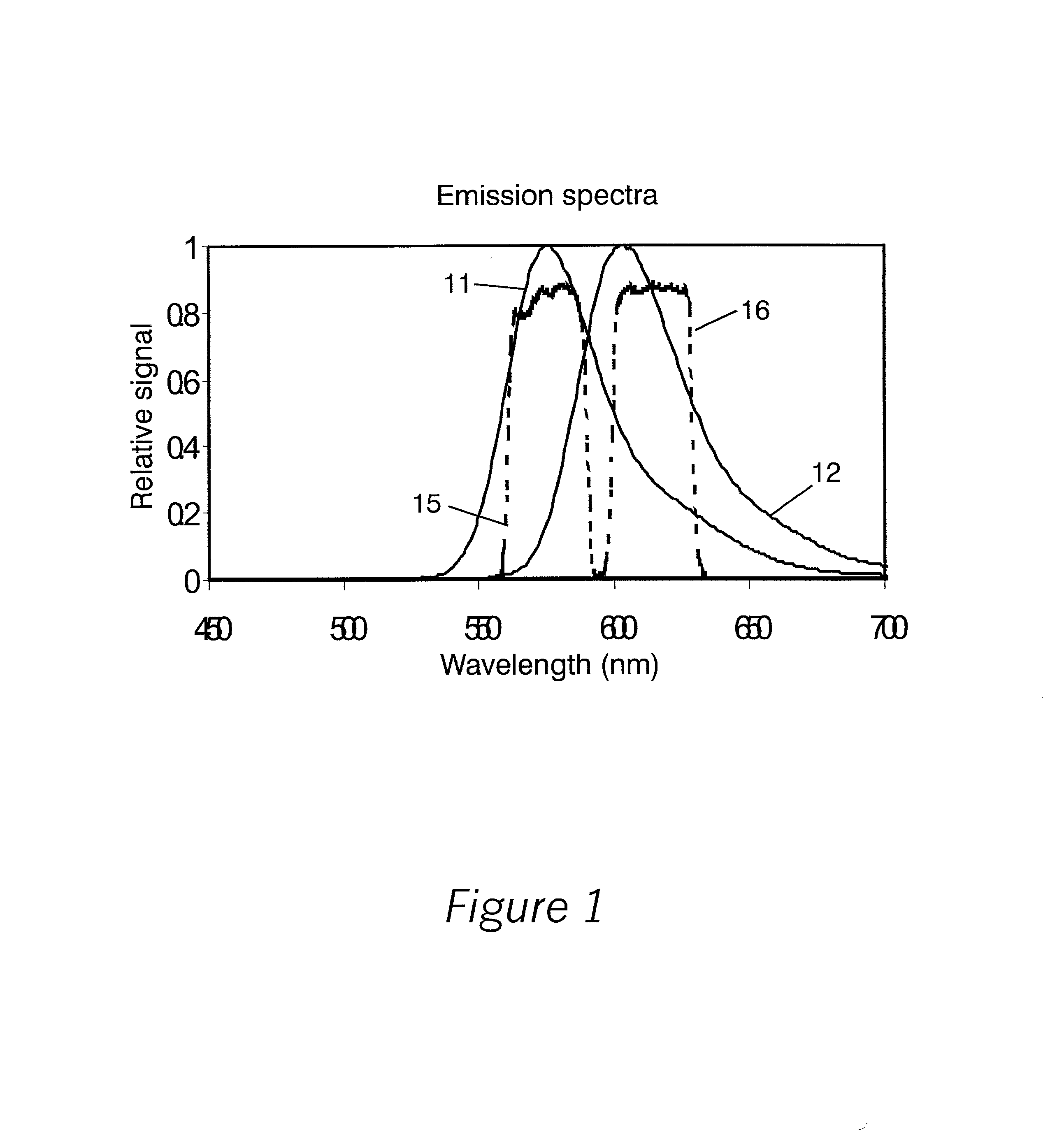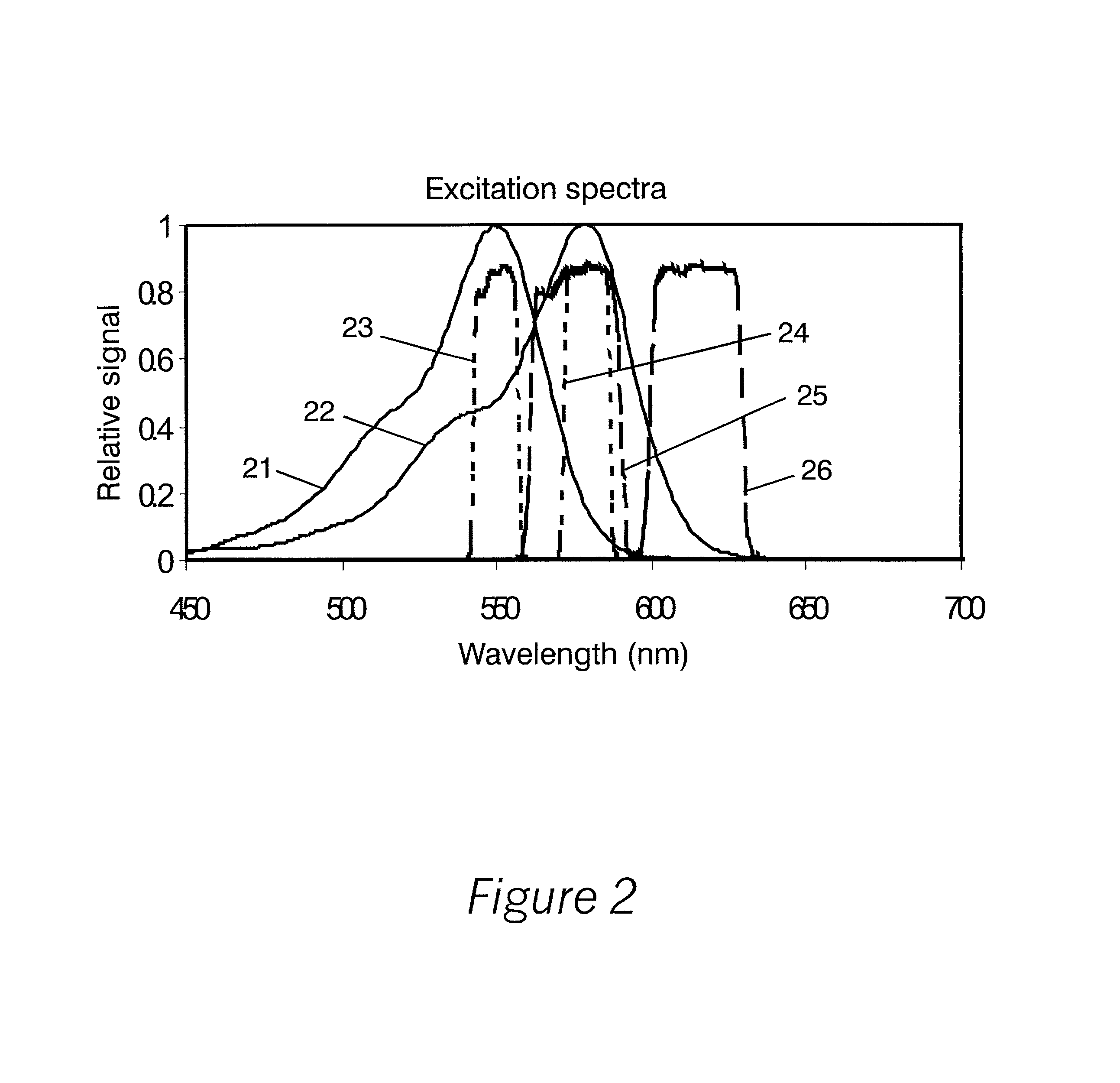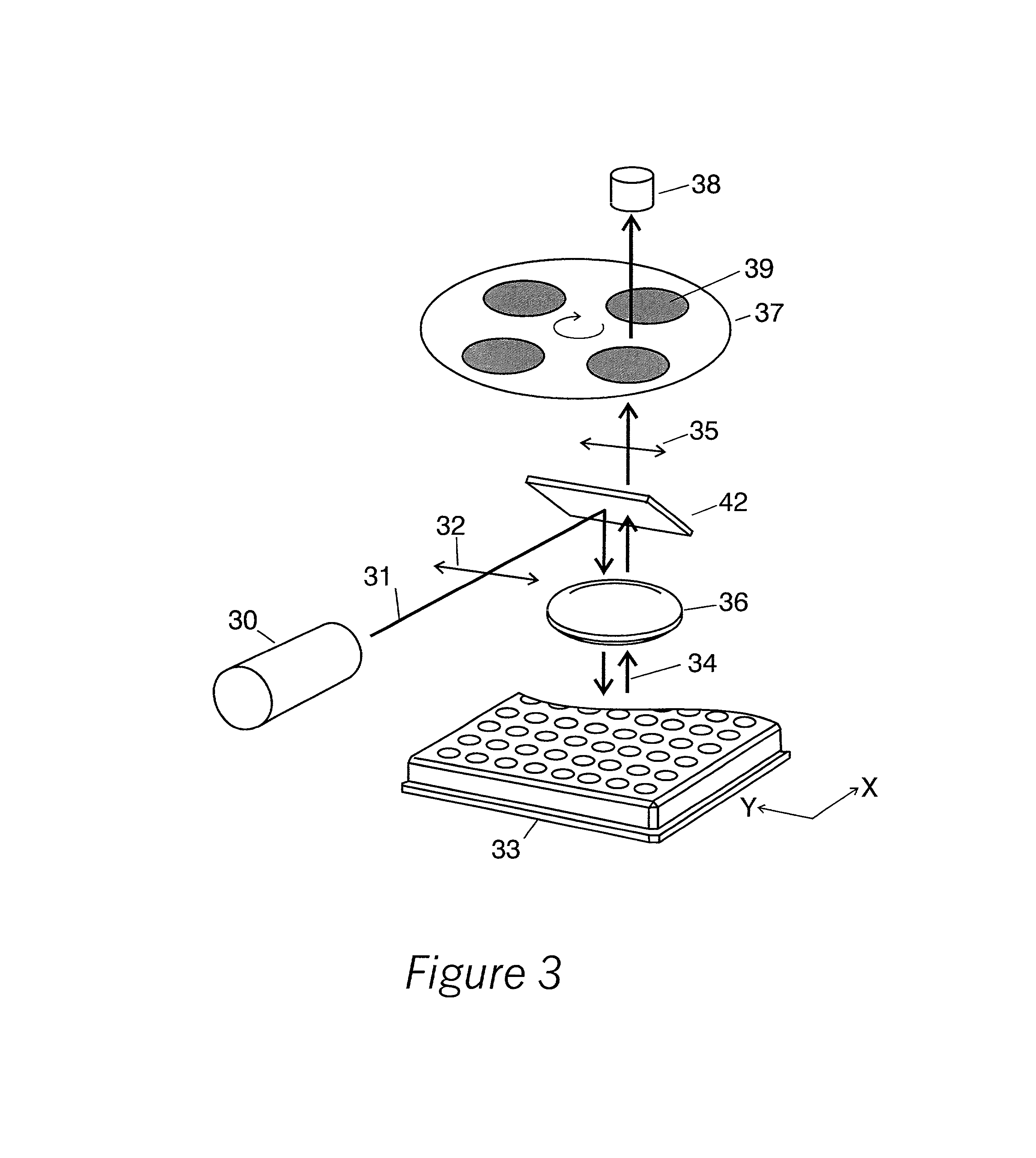Multiple label fluorescence polarization assay system and method
a fluorescence polarization assay and label technology, applied in the field of biochemical assays, can solve the problems of no system or method for measuring an fp assay with multiple probes, complicated measurement of fp, etc., and achieve the effect of accurately calculating fp or fa
- Summary
- Abstract
- Description
- Claims
- Application Information
AI Technical Summary
Benefits of technology
Problems solved by technology
Method used
Image
Examples
Embodiment Construction
[0040] Throughout this discussion, the instrument and method are described for two labels, but the principle can be extended to three or more labels using the same methodology. Also, where analysis and algorithms are presented in the form of particular algebraic equations or matrices, this is purely for the purpose of explaining the invention; one may use other equations or algorithms that achieve the same end in order to practice the invention.
[0041] Throughout the following, one state of polarization is termed h and its complement is v. These need not be horizontal and vertical, but either h or v must correspond to the major axis of the state of polarization used to excite the sample in any given measurement.
[0042] FIG. 1 shows the emission spectra 11 and 12 of two probes whose fluorescent emissions are measured after passing through bandpass filters having respective transmission bands 15 and 16. These are chosen so that band 15 includes spectra 11, and band 16 includes spectra 1...
PUM
 Login to View More
Login to View More Abstract
Description
Claims
Application Information
 Login to View More
Login to View More - R&D
- Intellectual Property
- Life Sciences
- Materials
- Tech Scout
- Unparalleled Data Quality
- Higher Quality Content
- 60% Fewer Hallucinations
Browse by: Latest US Patents, China's latest patents, Technical Efficacy Thesaurus, Application Domain, Technology Topic, Popular Technical Reports.
© 2025 PatSnap. All rights reserved.Legal|Privacy policy|Modern Slavery Act Transparency Statement|Sitemap|About US| Contact US: help@patsnap.com



